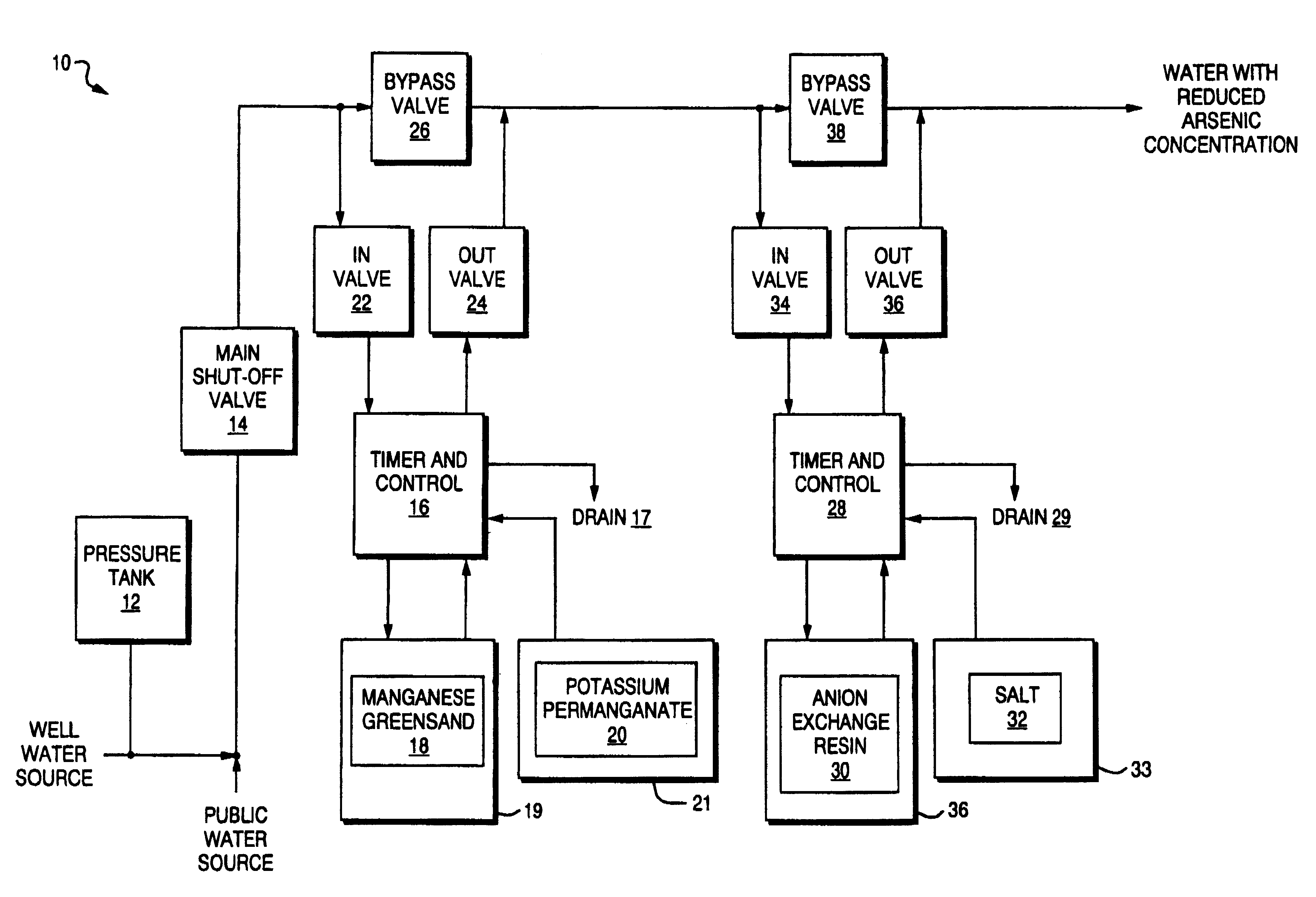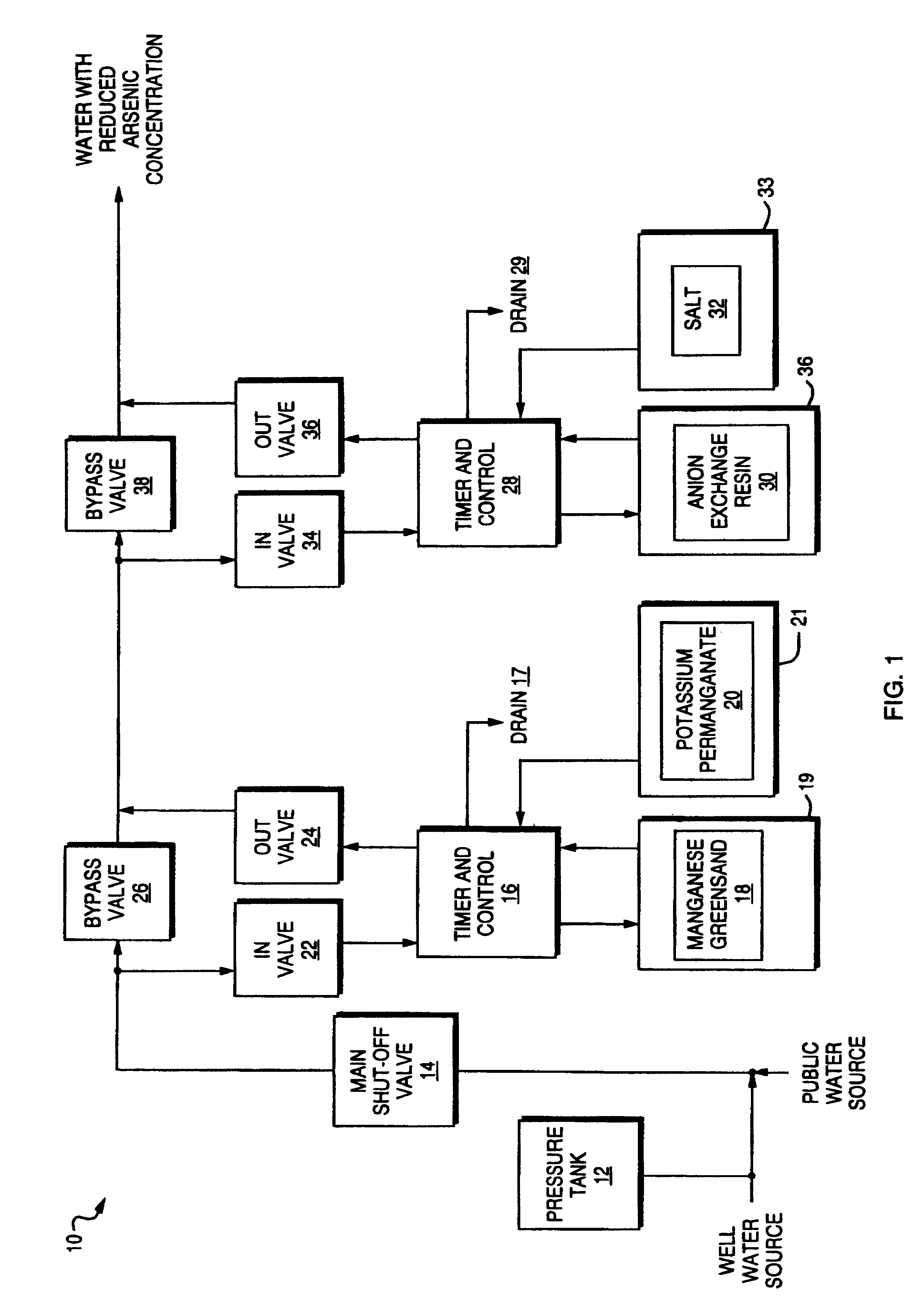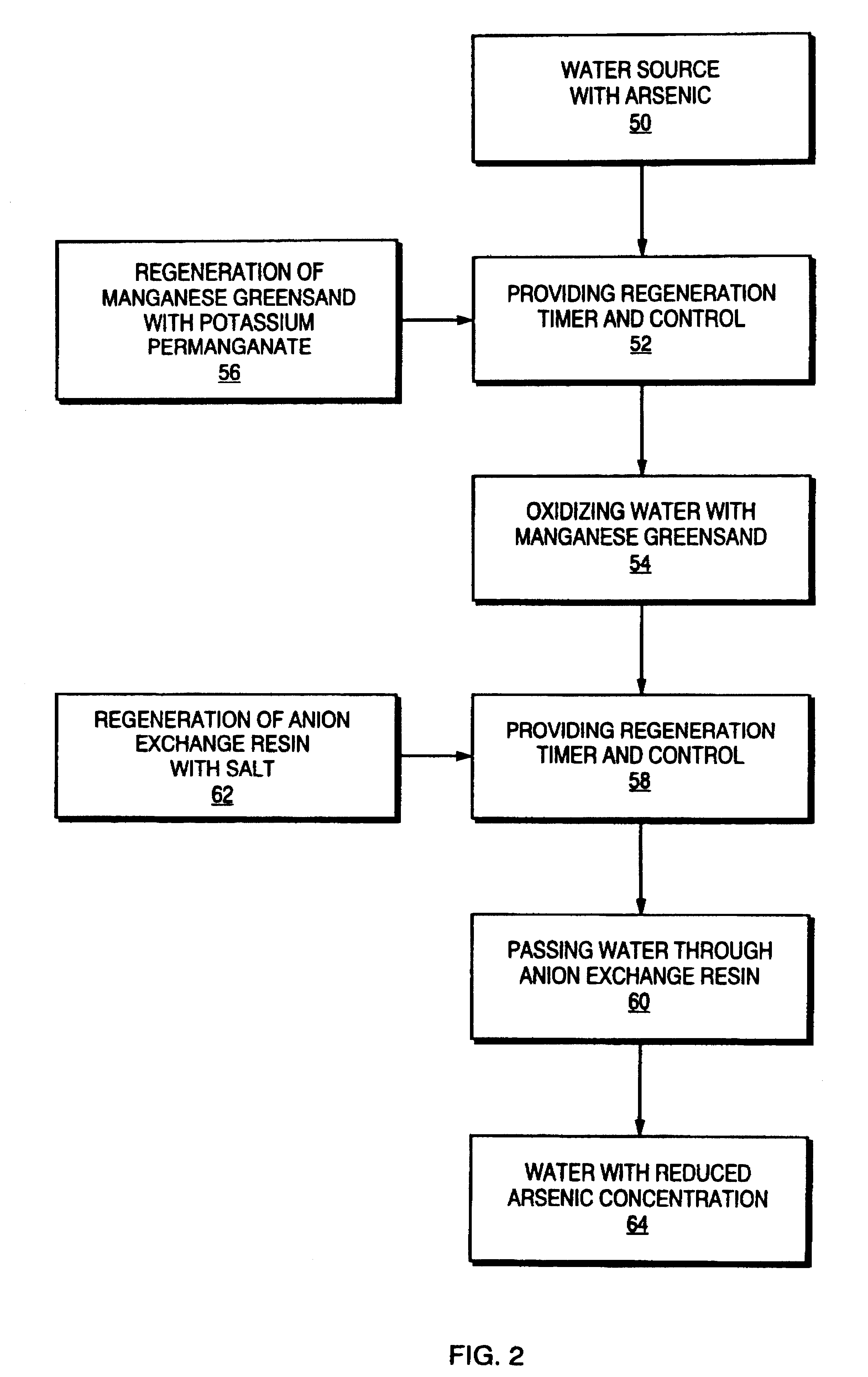Method and apparatus for the removal of arsenic from water
a technology of arsenic removal and water, applied in the direction of multi-stage water/sewage treatment, filtration separation, separation process, etc., can solve the problems of not being certified as an arsenic removal technique, not practical for residential applications, and most arsenic removal technologies are plagued by the basic difficulty of removing arsenite, etc., to achieve the effect of cost, space required, and efficiency
- Summary
- Abstract
- Description
- Claims
- Application Information
AI Technical Summary
Benefits of technology
Problems solved by technology
Method used
Image
Examples
Embodiment Construction
Referring to FIG. 1. a block diagram of the invention is shown for removing arsenic (As) from water. This invention is particularly optimized for residential application, but is equally applicable for commercial use. FIG. 1 shows a system 10 for removing arsenic from a well water source or from a public water supply where the user flow rates are typically 5-10 GPM through the system 10. Where the source of water is from a well, a pressure tank 12 is required. No pressure tank is generally required when the water is from a public water system.
The most common forms of arsenic found in drinking water or waste water streams are arsenite (As+3) and arsenate (As+5). The important feature of this system is that arsenite (As+3) is first converted to arsenate (As+5) and then the arsenate (As+5) is removed from the water. This method is very efficient, cost effective and safe for residential application. In particular, there are no chemicals requiring precision monitoring, and the chemicals u...
PUM
| Property | Measurement | Unit |
|---|---|---|
| flow rates | aaaaa | aaaaa |
| time | aaaaa | aaaaa |
| concentration | aaaaa | aaaaa |
Abstract
Description
Claims
Application Information
 Login to View More
Login to View More - R&D
- Intellectual Property
- Life Sciences
- Materials
- Tech Scout
- Unparalleled Data Quality
- Higher Quality Content
- 60% Fewer Hallucinations
Browse by: Latest US Patents, China's latest patents, Technical Efficacy Thesaurus, Application Domain, Technology Topic, Popular Technical Reports.
© 2025 PatSnap. All rights reserved.Legal|Privacy policy|Modern Slavery Act Transparency Statement|Sitemap|About US| Contact US: help@patsnap.com



